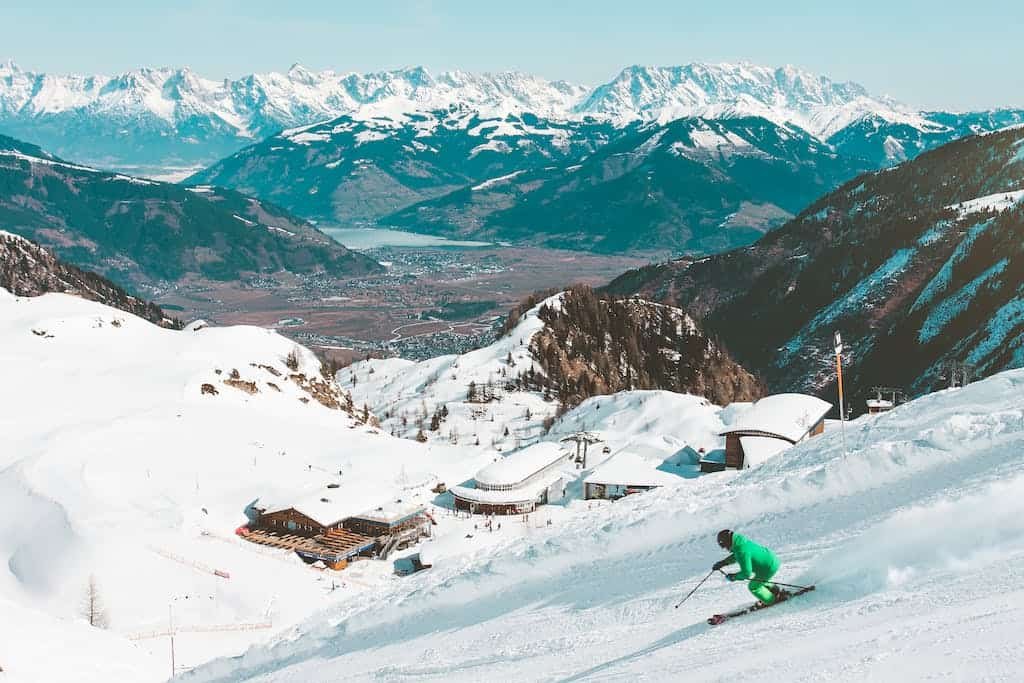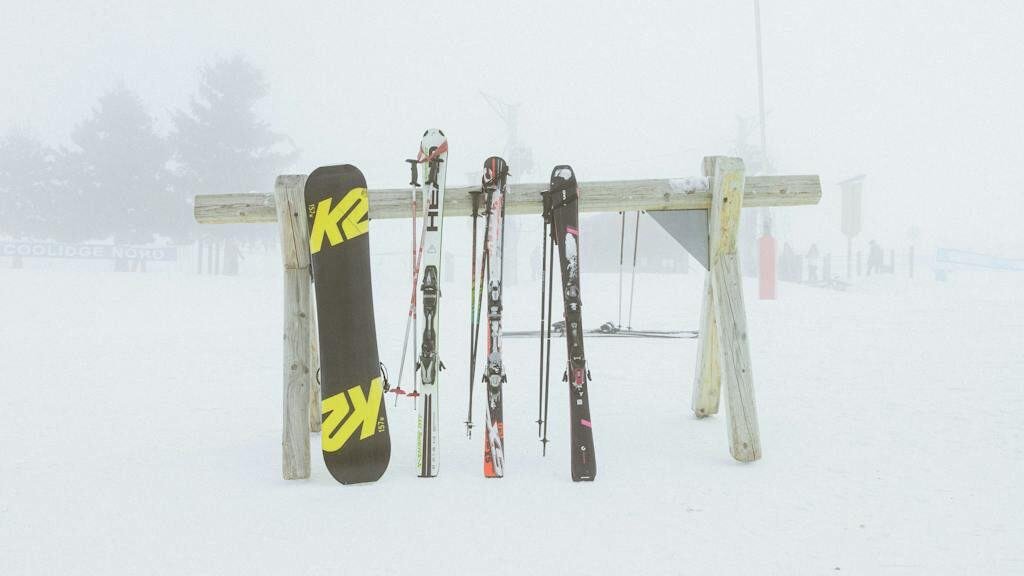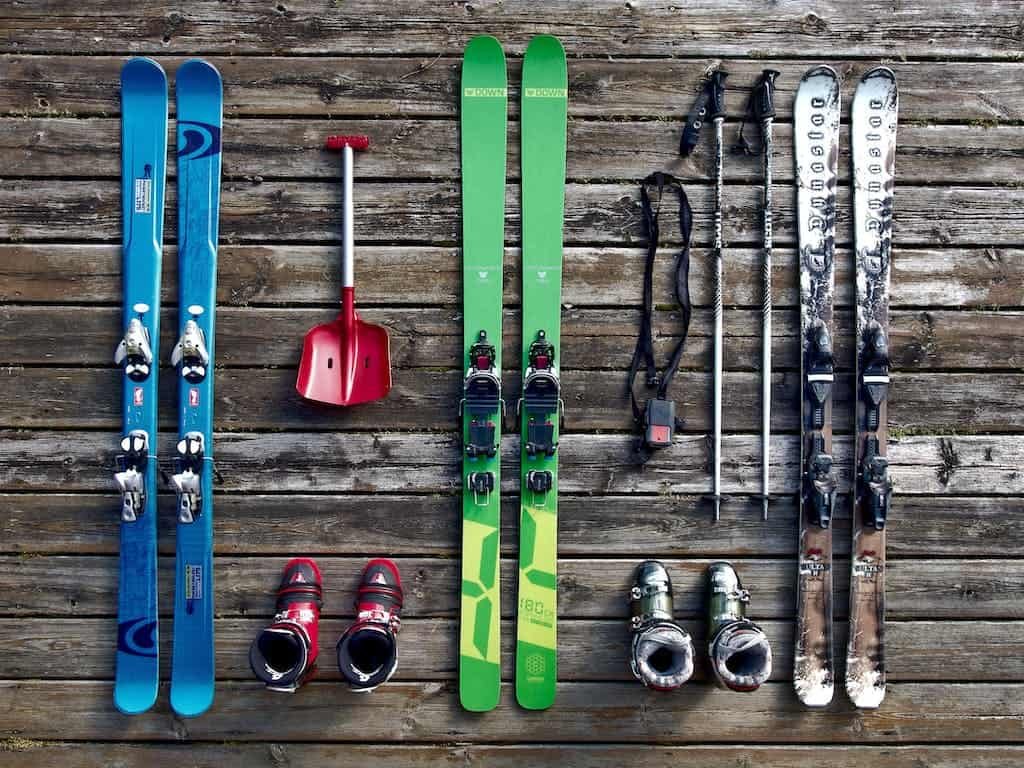How To Choose Downhill Skis

Downhill skiing is an exhilarating winter sport that offers a thrilling experience for both beginners and seasoned enthusiasts. However, choosing the right pair of downhill skis is not that easy, especially with the wide range of options available in the market. To help you make an informed decision, this article provides a comprehensive guide on how to choose downhill skis that are perfect for your needs.
Understanding the Basics of Downhill Skis

Before diving into the details, it’s important to have a basic understanding of downhill skis. Downhill skis are specifically designed for skiing at high speeds and maneuvering through different terrains. They consist of several key components that determine their performance and suitability for various skill levels and conditions.
Downhill skiing is a thrilling winter sport that requires skill, technique, and the right equipment. Downhill skis are an essential piece of gear for any skier looking to conquer slopes with speed and precision. These skis are typically longer and stiffer than other types of skis, providing stability and control at high speeds.
Different Types of Downhill Skis

There are three main types of downhill skis: all-mountain skis, carving skis, and powder skis. All-mountain skis are versatile and suitable for a wide range of terrains and conditions. Carving skis are narrower and designed for carving precise turns on groomed slopes. Powder skis, on the other hand, are wider and offer excellent floatation on deep powder snow.
Each type of downhill ski is optimized for specific skiing styles and conditions. All-mountain skis provide a good balance of performance on groomed trails and off-piste terrain, making them a popular choice for versatile skiers. Carving skis excel at making sharp, controlled turns on hard-packed snow, ideal for skiers who enjoy carving down steep slopes. Powder skis are wider to help skiers stay on top of deep snow, providing a smooth and effortless ride through powder-filled runs.
Key Features of Downhill Skis
When choosing downhill skis, it’s important to consider their key features, such as length, width, and sidecut. The length of skis affects stability and maneuverability, while the width determines their performance in different snow conditions. The sidecut refers to the hourglass shape of the skis, which affects their turning radius and overall handling.
Additionally, the flex of downhill skis plays a crucial role in their performance. Skis with a softer flex are more forgiving and easier to turn, making them suitable for beginners or lighter skiers. In contrast, skis with a stiffer flex provide better stability and edge grip at high speeds, ideal for advanced skiers looking to push their limits on challenging terrain.
Factors to Consider When Choosing Downhill Skis
Now that you understand the basics of downhill skis, let’s explore the factors you should consider when making your decision.
Choosing the perfect pair of downhill skis involves a careful assessment of various factors that can greatly impact your skiing experience. From your skill level and preferred terrain to your body type and ski size, each element plays a crucial role in determining the most suitable skis for you.
Skill Level and Ski Performance

Your skill level plays a crucial role in determining the performance characteristics of your downhill skis. Beginner skiers generally benefit from skis that provide stability and forgiveness, while advanced skiers may prefer skis that offer more responsiveness and precision.
For intermediate skiers looking to progress, skis with a balance of stability and maneuverability can be ideal. These skis offer a platform for improvement while still providing enough performance to tackle various slopes with confidence.
Terrain and Snow Conditions

The type of terrain and snow conditions you typically encounter should also influence your choice of downhill skis. If you mainly ski on groomed slopes, carving skis are a great option. However, if you enjoy exploring off-piste and deep powder, powder skis with wider widths will provide better floatation.
Furthermore, considering the versatility of an all-mountain ski can be advantageous if you enjoy exploring different types of terrain. These skis are designed to handle various snow conditions and terrain types, making them a great all-around option for skiers who like to mix up their adventures.
Body Type and Ski Size

Your body type, including height, weight, and skill level, should be taken into consideration when selecting the size of your downhill skis. Generally, taller and heavier skiers require longer skis for better stability and control, while shorter skiers may find shorter skis more manageable.
It’s essential to strike a balance between ski length and your skiing style. Longer skis provide more stability at higher speeds and in variable conditions, while shorter skis are easier to maneuver and control, making them a popular choice for terrain parks and moguls.
The Importance of Ski Construction
One often overlooked aspect of choosing downhill skis is their construction, which significantly impacts their performance and durability.
When it comes to ski construction, there are numerous factors to consider beyond just the materials used. For example, the design of the ski’s camber and rocker profile can greatly influence its performance on different types of terrain. Skis with a traditional camber are known for their excellent edge hold on hard snow, while those with more rocker excel in powder and off-piste conditions, providing better floatation and maneuverability.
Materials and Durability
Ski construction involves the use of different materials, such as wood, composite, and metal. Wood cores provide a smooth and damp feel, while composite cores offer a lightweight and forgiving ride. Skis with metal reinforcement provide better stability at higher speeds but may be heavier.
Furthermore, the way these materials are layered and integrated into the ski’s construction can also impact its overall performance. Some skis feature a sandwich construction with multiple layers of different materials, providing a balance of flex, torsional rigidity, and durability. On the other hand, cap construction skis are lighter and more maneuverable, making them ideal for freestyle and all-mountain skiing.
Flexibility and Responsiveness
The flex of the skis also plays a crucial role in their performance. Stiffer skis are more responsive and provide better edge grip, making them ideal for aggressive skiers. Softer skis, on the other hand, are more forgiving and easier to control, making them suitable for beginners or those who prioritize comfort.
Moreover, the distribution of the ski’s flex along its length, known as the ski’s flex pattern, can vary between models and brands. Some skis have a consistent flex from tip to tail, offering stability and predictability, while others have a progressive flex that allows for more energy and power in turns. Understanding how the flex pattern interacts with the ski’s overall construction can help skiers choose the right pair for their skiing style and preferences.
Ski Bindings and Boots

While downhill skis are the focal point, it’s equally important to consider the bindings and boots that connect you to the skis.
When it comes to ski equipment, bindings and boots are often overlooked but are crucial components of a successful skiing experience. Bindings serve as the link between your boots and skis, providing stability and safety on the slopes. They are designed to release in case of a fall, reducing the risk of injury. Selecting the right bindings involves considering factors such as your weight, skiing ability, and the type of terrain you frequent.
Choosing the Right Ski Bindings
Ski bindings are responsible for securing your boots to the skis and releasing in case of a fall. It’s crucial to choose bindings that are compatible with your ski boots and provide the appropriate release settings based on your skill level and skiing style.
Modern ski bindings come with advanced features such as adjustable release settings, allowing for customization based on individual preferences. Some bindings are specifically designed for powder skiing, offering enhanced performance in deep snow conditions. It’s essential to consult with a knowledgeable ski technician to ensure your bindings are properly adjusted for optimal safety and performance.
Importance of Proper Ski Boots
Ski boots play a vital role in transferring your movements to the skis. They should be comfortable, provide adequate support, and fit snugly. It’s recommended to try on multiple pairs of boots and consult with a professional boot fitter to ensure you find the perfect match for your feet.
When selecting ski boots, factors such as flex rating, last width, and boot liner material should be taken into account to ensure maximum comfort and performance. A proper fitting boot enhances your control on the slopes and minimizes the risk of foot-related injuries. Investing in high-quality ski boots that are suited to your skiing ability and style can significantly improve your overall skiing experience.
Maintenance and Care for Downhill Skis
Proper maintenance and care can significantly prolong the lifespan of your downhill skis and optimize their performance.
Downhill skis are precision instruments designed to glide effortlessly down snow-covered slopes, providing you with an exhilarating experience on the mountains. To ensure that your skis continue to deliver top-notch performance, it is essential to prioritize their maintenance and care.
Regular Ski Maintenance
Regularly waxing your skis and sharpening the edges are essential maintenance tasks that ensure optimal glide and control. The wax helps reduce friction between the skis and the snow, allowing you to glide smoothly, while sharp edges provide the necessary grip for turning and stopping. Additionally, inspecting the bindings, bases, and topsheets for any signs of damage or wear is crucial to address any issues promptly and prevent further damage.
Investing in a ski tuning kit can be beneficial for at-home maintenance, allowing you to keep your skis in top condition without frequent visits to a professional ski shop. Learning how to properly wax and tune your skis can not only save you money in the long run but also deepen your connection with your gear.
Storing Your Skis Properly
When you’re not using your downhill skis, it’s important to store them properly to prevent damage. Keep them in a cool and dry place, away from direct sunlight and extreme temperatures. Storing skis in a ski rack or wall mount can help save space and prevent warping. Using ski straps or a ski bag can help protect them from scratches and dings during transportation and storage.
Remember, taking care of your downhill skis is not just about preserving their appearance; it directly impacts your safety and performance on the slopes. By dedicating time to maintenance and proper storage, you can ensure that your skis remain in top condition for many seasons of thrilling adventures.
Making the Final Decision
Finally, when selecting downhill skis, it’s always recommended to try before buying and seek advice from experts.
Trying Before Buying
Many ski resorts offer demo centers where you can rent and test various skis to see how they perform on the slopes. This firsthand experience can help you make a more informed decision based on your preferences and skiing style.
When trying out skis, pay attention to factors such as the ski length, width, and shape. Different skis are designed for various skiing styles, whether it’s carving on groomed runs, floating in powder, or navigating through moguls. Experiment with different models to find the ones that feel most comfortable and responsive to your movements.
Where to Buy Downhill Skis
You can purchase downhill skis from specialty ski shops, sporting goods stores, or online retailers. It’s important to buy from reputable sellers and brands that offer warranties and customer support.
Shops like REI and Evo are known for their wide choices of downhill skis, appealing to a broad spectrum of skiing enthusiasts with a variety of performance levels and styles. Their expert staff and comprehensive online resources simplify the process of selecting the perfect skis, ensuring customers make informed decisions based on their skill level and skiing conditions. With a commitment to customer satisfaction, both REI and Evo offer exceptional after-sales services, including ski maintenance and adjustments, positioning them as top choices for purchasing downhill skiing equipment.
Before making a purchase, do some research on the brands and models available in the market. Read reviews from other skiers to get an idea of the performance and durability of the skis you’re interested in. Additionally, consider factors like the return policy and after-sales service offered by the seller, as these can be crucial in case you encounter any issues with your skis.
Here is an informative video from Evo on how to choose skis.
Choosing the right pair of downhill skis is crucial for maximizing your enjoyment on the slopes. By considering factors such as ski type, skill level, terrain, and construction, you’ll be well-equipped to make an informed decision. Remember to also pay attention to ski bindings, boots, proper maintenance, and where to buy. With the right skis in hand, you’ll be ready to carve up the mountain with confidence and style.






